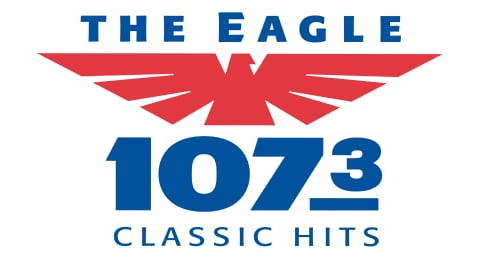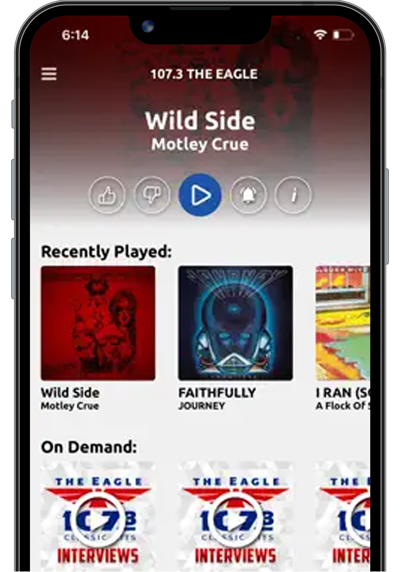Before dawn on Tuesday, a Singaporean-flagged cargo ship called the Dali crashed into Baltimore’s Francis Scott Key Bridge, collapsing it and killing six people who were repairing potholes on the bridge.
On Wednesday night, the National Transportation Safety Board released a timeline of the events that took place in the minutes prior to the crash as the ship lost power as it headed toward one of Baltimore’s most traveled bridges.
The timeline shows that officials were given only about a minute and a half to stop traffic from crossing the bridge after a desperate attempt to turn the vessel failed.
While officials stopped traffic on the bridge, the crew that was fixing potholes was not so fortunate. They could not get off the bridge before the ship hit it. Of the eight men on the crew, two survived, the bodies of two have been recovered, and the other four are believed to have been killed, but their bodies have not been recovered.
Here’s how the NTSB said that the events unfolded.
- Approximately 12:39 a.m.: The Dali departs from Seagirt Marine Terminal in Baltimore headed for Sri Lanka. The ship, which weighs 96,000 tons empty.
Two tugboats guide the vessel as it leaves the terminal. A harbor pilot and an apprentice pilot in training are also onboard the ship.
- 1:07 a.m.: The Dali enters the Fort McHenry Channel headed toward the Francis Scott Key Bridge. Had the Dali cleared the bridge, the ship would have then entered Chesapeake Bay and moved out to the Atlantic Ocean.
- 1:24:59 a.m.: The two tugboats detached from the ship and turned back to go back to the terminal. The ship begins to speed up at this time, reaching about 10 knots as it heads toward the bridge.
Then “numerous audible alarms” begin shrieking onboard the ship. The alarms are recorded on the ship’s VDR, or voyage data recorder. The VDR stops recording when the propulsion system stops. The lights on the ship go out, but the audio from the ship’s system data is recorded via another power source.
- 1:26:02 a.m.: The VDR comes back up and resumes recording the ship’s system data after about a minute. Audio recordings capture steering commands being given.
- 1:26:39 a.m.: Thirty-seven seconds later, the ship’s pilot makes a general very high frequency (VHF) radio call looking for any tugboats in the vicinity to come help the ship because they cannot steer it.
One of the tugboats that had taken the ship out of the Fort McHenry Channel, the Eric McAllister, turns around and races back toward the Dali.
The pilot association dispatcher contacted the Maryland Transportation Authority duty officer to report that the ship had a power blackout in the vicinity of the bridge.
The harbor pilot notices the ship has started to swing right, lining up for a direct strike on one of the columns holding up the Key Bridge
- 1:27:04 a.m.: The pilot ordered that the ship’s port anchor be dropped and issued more steering commands. Briefly, the lights come back on the ship as an emergency generator comes on. It was that generator that caused the black puff of smoke from the exhaust stack that can be seen in the video of the accident.
The power from the generator momentarily restored the steering capabilities to the ship, but it was too late to turn a nearly 1,000-foot, 95,000-ton vessel traveling around 9 miles per hour off its course.
- Around 1:27:25 a.m.: The pilot issues another call over the VHF radio, reporting that the vessel had lost all power and is approaching the bridge.
Seconds later, the transit authority duty officer radios units on each end of the bridge to close the Key Bridge to traffic.
“There’s a ship approaching that just lost all their steering,” the dispatcher says, according to 911 records. “So until you get that under control, we got to stop all traffic.”
Someone on the 911 call about closing the bridge mentions the men working on the bridge.
“I’m not sure if there’s a crew up there, you might want to notify whoever the foreman is, see if we can get them off the bridge temporarily.”
- 1:29 a.m.: The VDR records the first sounds of a collision. The ship was moving at 8 mph.
The sounds continue for 33 seconds as the column crumbles from the impact and the bridge falls into the water, with parts of it hitting the Dali.
- 1:29:39 a.m.: The pilot radios the US Coast Guard reporting the bridge has collapsed.
© 2024 Cox Media Group

:quality(70)/cloudfront-us-east-1.images.arcpublishing.com/cmg/F3SOYIYVGNDNZHCHYM3BXLDICA.jpg)
:quality(70)/cloudfront-us-east-1.images.arcpublishing.com/cmg/APBIZV7FRFGZHIT5OTD3DRK4IQ.jpg)
:quality(70)/cloudfront-us-east-1.images.arcpublishing.com/cmg/ELVHJWPJH5EB7FLOKV6GXL7TSE.jpg)
:quality(70)/cloudfront-us-east-1.images.arcpublishing.com/cmg/GJ2E6R4BSZGSJLUGW7NK6E6SAI.jpg)
:quality(70):focal(266x190:276x200)/cloudfront-us-east-1.images.arcpublishing.com/cmg/5GT7OZ343ND75NN35DJJRLM4DA.jpg)
:quality(70)/cloudfront-us-east-1.images.arcpublishing.com/cmg/CTWYYXHBNRER5G2PTF5U5AHN5E.jpg)
:quality(70)/cloudfront-us-east-1.images.arcpublishing.com/cmg/WFH5DIWB2FHPXOD6LHBMVBQYUA.png)
:quality(70)/cloudfront-us-east-1.images.arcpublishing.com/cmg/DKPPWRUP4VCAJBLTXOLMPWTWAE.jpg)
:quality(70)/cloudfront-us-east-1.images.arcpublishing.com/cmg/XBHNUPS27JH4XM66NYX6ARVKNE.jpg)
:quality(70)/cloudfront-us-east-1.images.arcpublishing.com/cmg/V52SUZHSD5EBPLTFSUWR2VUVX4.jpg)
:quality(70)/cloudfront-us-east-1.images.arcpublishing.com/cmg/KP5G5DDWGRHENGHCKQUGSI3P44.jpg)
:quality(70)/cloudfront-us-east-1.images.arcpublishing.com/cmg/D3BAIVMHP5FHHFNXZYZ3YDIOAM.jpg)
:quality(70)/cloudfront-us-east-1.images.arcpublishing.com/cmg/DXYLNRKQ3RAXNHNULE2B4KYOQU.jpg)
:quality(70)/cloudfront-us-east-1.images.arcpublishing.com/cmg/HPBIIMR6ZBE4LNZOKGVIWGRO4I.jpg)
:quality(70)/cloudfront-us-east-1.images.arcpublishing.com/cmg/OSS5ST235NGEPAXMCTSIXUWKE4.jpg)
:quality(70)/cloudfront-us-east-1.images.arcpublishing.com/cmg/AJ7Z6OHKRJH4NAJ72CVARIF2C4.jpg)
:quality(70)/cloudfront-us-east-1.images.arcpublishing.com/cmg/AVQPIYC67BCEZHGCMH63ERE5H4.jpg)
:quality(70)/cloudfront-us-east-1.images.arcpublishing.com/cmg/3DYE26PUOVFZ5AZZLQHFF2N4SA.jpg)
:quality(70)/cloudfront-us-east-1.images.arcpublishing.com/cmg/LXZR2XYTVNGVNCWG7DFZKQZLAM.jpg)
:quality(70)/cloudfront-us-east-1.images.arcpublishing.com/cmg/2XUPEBG2ANHHNIOEVG5HXFBA44.jpg)
:quality(70)/cloudfront-us-east-1.images.arcpublishing.com/cmg/54XP4ROQEBGGTIF4GVAHUE2SRQ.jpg)



:quality(70)/cloudfront-us-east-1.images.arcpublishing.com/cmg/5KRWSKTPSNFTTHWGC5V3K2FQJQ.png)
:quality(70)/cloudfront-us-east-1.images.arcpublishing.com/cmg/G6ALIJDNANFC3M5SLOIZUZKUE4.png)
:quality(70)/cloudfront-us-east-1.images.arcpublishing.com/cmg/RGAAFXZS6NF6BH6E62O6EF4OSM.jpg)
:quality(70)/cloudfront-us-east-1.images.arcpublishing.com/cmg/V6APUI3KNRHSNIJWP4N7V22FG4.png)
:quality(70)/cloudfront-us-east-1.images.arcpublishing.com/cmg/2XS66IE5BVE4ZEPOVRYCNPBXDA.png)
:quality(70):focal(633x352:643x362)/cloudfront-us-east-1.images.arcpublishing.com/cmg/PG2Q5QRRJBCCHHTO2OGP77N4PA.png)